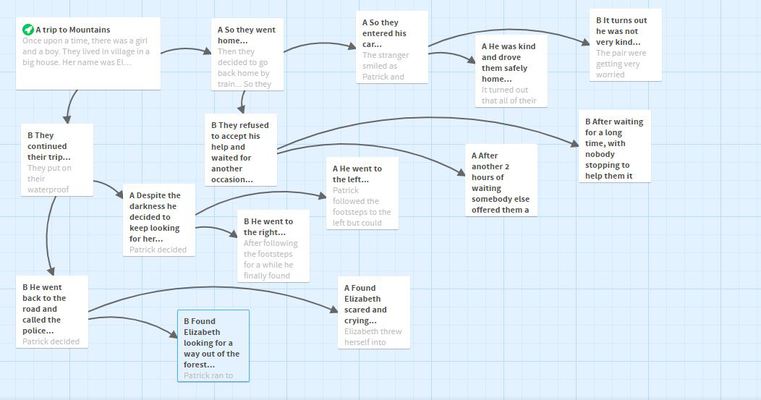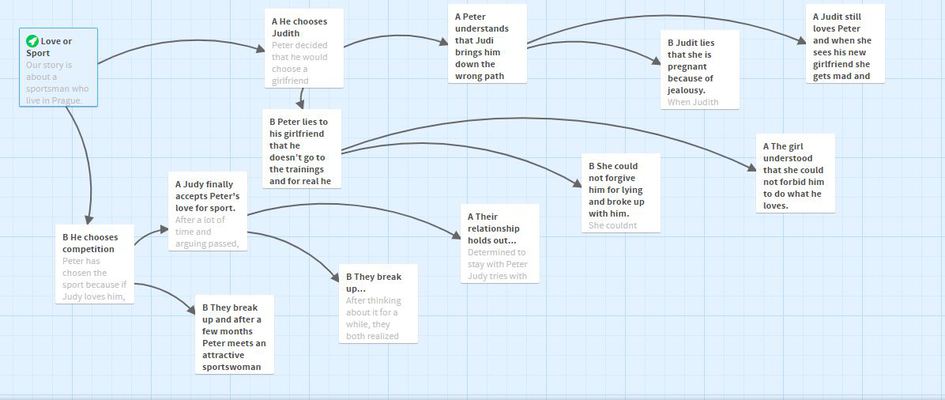Let´s write non-linear stories TOGETHER
Background
Most stories happen along a linear timeline - written in the chronological order of when the events take place: event A, midpoint B, conclusion C. One reason for this common approach is that it allows you to show cause-and-effect most easily. But if you have a particularly challenging narrative, character, or event to offer readers, you may want to use nonlinear timelines.
Nonlinear timelines always have a purpose: to increase the drama in a story that may be emotional but wouldn’t be a page turner if told the traditional way, to build tension by keeping readers on their toes, to emphasize a story’s theme, to flesh out the plot or develop a character in a unique way, or to stagger pacing so it has the best effect on the story’s overall momentum. These timelines often allow for a great surprise ending, either leading to an exciting reader aha or moving readers to tears.
Our Task
Writers create a passage and then another team continues writing by completing options A and B and creating another A and B for each of their option, then another team comes and continues. See the table in online documents. In fact, there are four parts in each story to create.
STORY 1 created!
STORY 2 created!
STORY 3 created!
STORY 4 created!
STORY 5 created!
ENJOY YOUR TIME AND HAVE FUN!
After the stories have been completed, they will be uploaded on Twine to make them even more catching.

